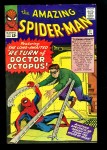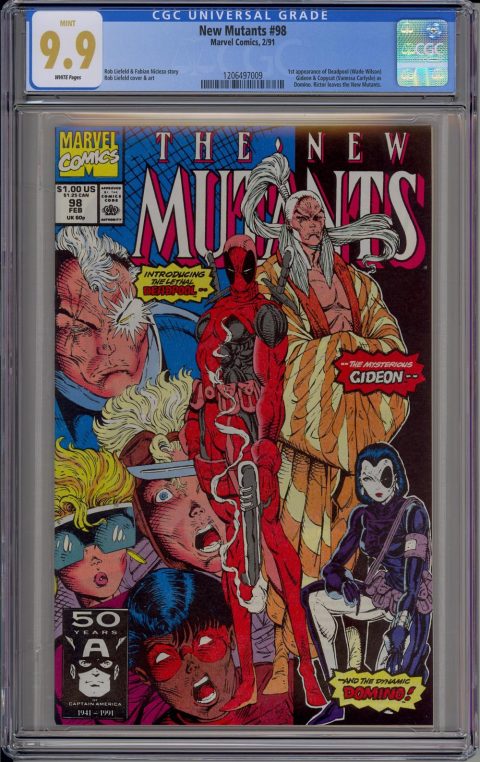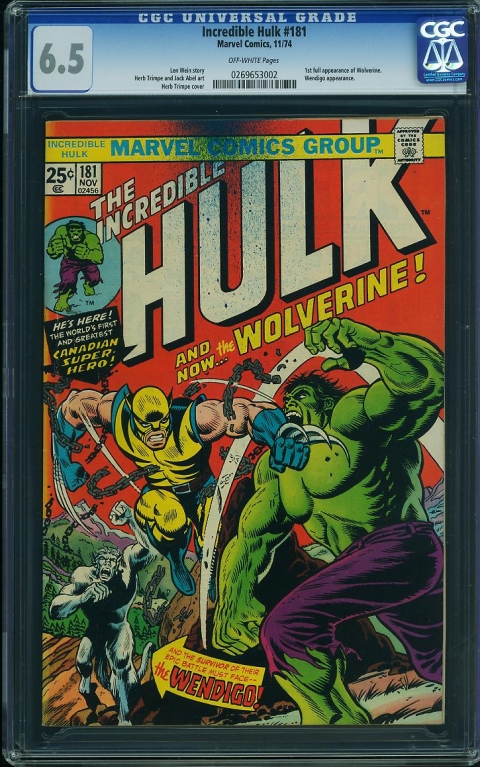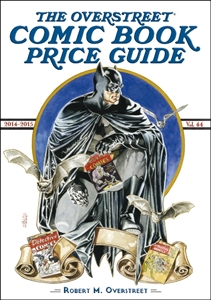-warning, some heavy math and healthy assumptions are used in this article-
In my Auction Highlights #43 I looked at the recent $21,250.00 ComicLink sale of a CGC 9.6 Amazing Spider-Man #11. This comic book has an Overstreet Comic Book Price Guide value of $2,400 in the 9.2 grade. ComicLink noted that the CGC 9.6 grade is rare for this comic book. The ComicLink auction had this note:
In fact, out of the whopping 466 examples sent in to CGC, only 7 have reached CGC’s Near Mint tier of 9.4 and this stunning CGC 9.6 is 1 of only 4 in the world to reach CGC’s coveted “top dog” CGC Near Mint+ 9.6 grade…
 I went on to try and prove that #11 is no less scarce in high grade than other early Amazing Spider-Man issue and that there are many more out there still ungraded. Part of my piece read:
I went on to try and prove that #11 is no less scarce in high grade than other early Amazing Spider-Man issue and that there are many more out there still ungraded. Part of my piece read:
There are over 3 times as many Amazing Spider-Man #14s (1218 universal blue labels) graded as there are #11s (398 universal blue labels) and wouldn’t you know it there are just over 3 times as many 9.6s as well (13 9.6 ASM #14s vs. 4 9.6 ASM 11s). There are still a lot of very nice Spideys out there. People don’t generally grade their run books because cost is prohibitive…
I wanted to explore this topic a bit more.
 I did a quick check on the CGC Census on Amazing Spider-Man #1-50. It turns out that Amazing Spider-Man #11 is statistically the 15th scarcest Spidey at a grade 9.6 or above. As of this post there are no Spidey #4s above the 9.4 grade, Spidey #1 is next scarcest statistically with only 4 of the 1259 graded coming back a 9.6 or higher (that’s less than a third of one percent). In fact Spidey #2, 3, 6, 7, 9, 12, 13, 15, 23, 28, 37 and #50 are also statistically scarcer than #11 in Universal grades at 9.6 or above. For all the above issues stated less than 1% of submissions come back at 9.6 or better. This tells us Spidey’s are scarce in very high grade across the board, in fact of the first 30 issues of Amazing Spider-Man only 3 register a 9.6 or better grade frequency above 2% (#18, 19 and 29) while 13 of them have a frequency of 1% or less.
I did a quick check on the CGC Census on Amazing Spider-Man #1-50. It turns out that Amazing Spider-Man #11 is statistically the 15th scarcest Spidey at a grade 9.6 or above. As of this post there are no Spidey #4s above the 9.4 grade, Spidey #1 is next scarcest statistically with only 4 of the 1259 graded coming back a 9.6 or higher (that’s less than a third of one percent). In fact Spidey #2, 3, 6, 7, 9, 12, 13, 15, 23, 28, 37 and #50 are also statistically scarcer than #11 in Universal grades at 9.6 or above. For all the above issues stated less than 1% of submissions come back at 9.6 or better. This tells us Spidey’s are scarce in very high grade across the board, in fact of the first 30 issues of Amazing Spider-Man only 3 register a 9.6 or better grade frequency above 2% (#18, 19 and 29) while 13 of them have a frequency of 1% or less.
Approximately half of early Amazing Spider-Man issues grade at 9.6 or better less than 1 in 100 times. No wonder prices are crazy.
But are 9.6s truly scarce? What supply point will bring prices tumbling down?
What if we looked at the CGC census numbers for Amazing Spider-Man #1? There are 1259 universally graded Spidey #1s out there as of this post. There are only 398 univerally graded #11s. This leads me to assume a few things;
1st – a higher percentage of the Amazing Spider-Man #1s that exist will end up graded. Economics will dictate this as almost any grade of Spidey #1 is worth grading. The fact that almost all #1s are worth grading will skew the high grade scarcity to even scarcer relative to lesser valued issues (if approximately the same quantities of #1 exist as #2 but #1 is worth 5 times more money, less low grade #2s will get graded because their market value in low grade does not justify the grading fees and this will make the #1s seem statistically scarcer in high grade).
2nd – here’s where I pull a Drake (Drake’s formula for estimating the probability of alien life). I will take a stab at guessing that half the Amazing Spider-Man #1’s out there have been graded so far (this number does not have to be accurate for my argument). So if another 1250 Amazing Spider-Man #1s get sent to CGC over the next decade we can assume 4 more will grade at 9.6 or better).
3rd – there are more Amazing Spider-Man #11s than there are #1s etc. In the beginning Spider-Man’s popularity was growing by the month so we can safely assume this.
4th – We must factor in the fact that people are practical and concede that many lower grade #11s will not get graded because they are not worth it based on market prices. This indeed is true. If you look at Amazing Spider-Man #1, 78% grade below 6.0 and if we look at #11 only 46% grade below 6.0 (this puts my faith back in people acting sensibly). If we weight this correctly by assuming all #11s were graded we’d actually see that the frequency of the grade 9.6 or better would fall from the current 1% and settle at a rate about twice the #1 levels (or just over 0.61%).
OK, some heavy math going on here but if I’ve done this correctly we should see about twice the frequency of 9.6s or better for Amazing Spider-Man #11s compared to #1s. There are more #11s out there though (I’ll guess one and a half times more).
Finally, if my crystal ball is correct then in the year 2020 there should be about 8 Amazing Spider-Man #1s graded at CGC 9.6 or better and there should be somewhere around 24 Amazing Spider-Man #11s at 9.6 or better (2 times the frequency multiplied by 1.5 times the supply) .
Year 2020
Estimate a potential of 2500 Amazing Spider-Man #1s graded (remember I’m assuming about half the Spidey #1s are now graded), frequency at which a 9.6 or better grade is achieved is 0.32%.
2500 * .0032 = 8 CGC 9.6 or better Amazing Spider-Man #1s
Estimate a potential of 3750 Amazing Spider-Man #11s graded (remember I’m assuming there are one and a half times as many #11s as there are #1s), frequency at which a 9.6 or better grade is achieved is 0.61%.
3750 * .0061 = 23 CGC 9.6 or better Amazing Spider-Man #11s
Will 5 to 6 times the current supply of CGC graded 9.6 Amazing Spider-Man #11s be able to sustain the current market price? Not unless we see a similar increase in demand.
Walter Durajlija is an Overstreet Advisor and Shuster Award winner. He owns Big B Comics in Hamilton, Ontario, Canada




